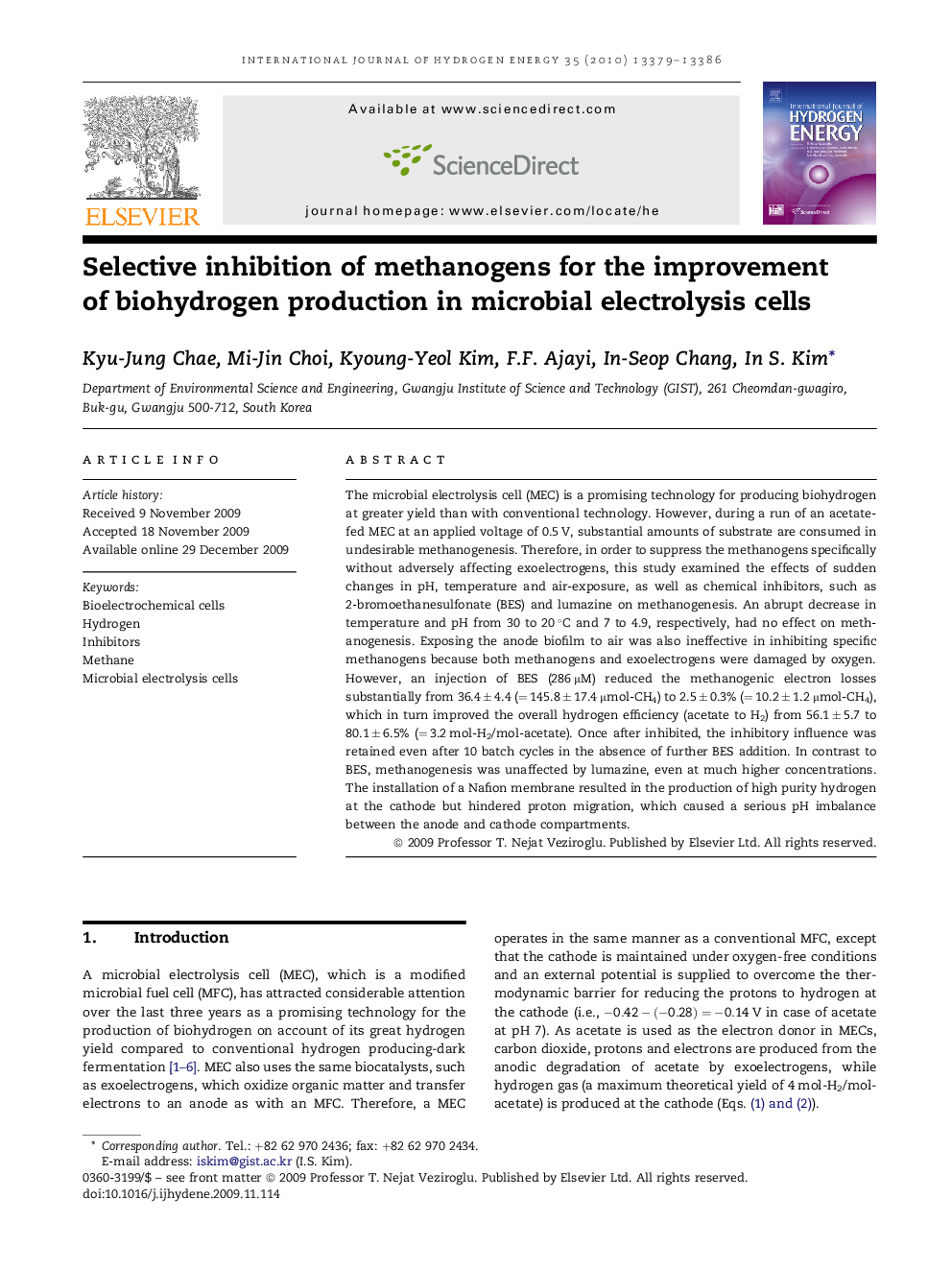| Article ID | Journal | Published Year | Pages | File Type |
|---|---|---|---|---|
| 1282702 | International Journal of Hydrogen Energy | 2010 | 8 Pages |
The microbial electrolysis cell (MEC) is a promising technology for producing biohydrogen at greater yield than with conventional technology. However, during a run of an acetate-fed MEC at an applied voltage of 0.5 V, substantial amounts of substrate are consumed in undesirable methanogenesis. Therefore, in order to suppress the methanogens specifically without adversely affecting exoelectrogens, this study examined the effects of sudden changes in pH, temperature and air-exposure, as well as chemical inhibitors, such as 2-bromoethanesulfonate (BES) and lumazine on methanogenesis. An abrupt decrease in temperature and pH from 30 to 20 °C and 7 to 4.9, respectively, had no effect on methanogenesis. Exposing the anode biofilm to air was also ineffective in inhibiting specific methanogens because both methanogens and exoelectrogens were damaged by oxygen. However, an injection of BES (286 μM) reduced the methanogenic electron losses substantially from 36.4 ± 4.4 (= 145.8 ± 17.4 μmol-CH4) to 2.5 ± 0.3% (= 10.2 ± 1.2 μmol-CH4), which in turn improved the overall hydrogen efficiency (acetate to H2) from 56.1 ± 5.7 to 80.1 ± 6.5% (= 3.2 mol-H2/mol-acetate). Once after inhibited, the inhibitory influence was retained even after 10 batch cycles in the absence of further BES addition. In contrast to BES, methanogenesis was unaffected by lumazine, even at much higher concentrations. The installation of a Nafion membrane resulted in the production of high purity hydrogen at the cathode but hindered proton migration, which caused a serious pH imbalance between the anode and cathode compartments.
